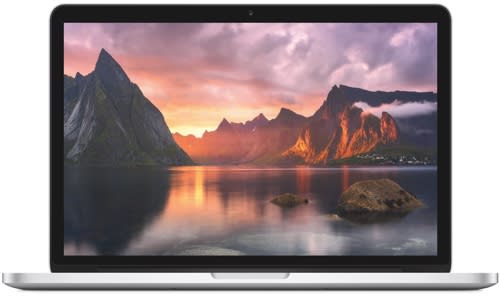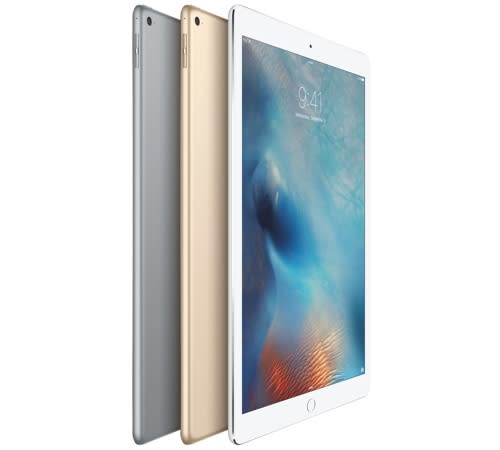How Apple can get investors excited again

Apple (AAPL) is one of the most valuable companies in the world. But it’s not infallible. Just look at the company’s last two fiscal quarters. For Q2, the company reported its first revenue decline in 13 years.
While Apple beat expectations when it reported earnings Tuesday, revenue still declined 15%. Sure, the stock is up around 8% in trading today. But it’s still down for the year during a period when the market (^GSPC) is up 6%.
To get back on track, Apple has to get its customers excited about the company’s products again. And that starts with making them more compelling than the current lineup. That means a significantly upgraded iPhone, improved MacBooks and a reason to finally buy a new iPad. Right now, it feels like Apple is just selling us the same products every year with slight improvements and expecting us to run out and buy them — because a few executives got on stage and called them magical.
Here are some steps Apple can take to turn its losses around.
A genuinely interesting iPhone
The iPhone 7 is right around the corner, and as expected, the internet is awash in leaks and rumors. Various sources point to three versions of the iPhone 7: the standard iPhone 7, the iPhone 7 Plus and a new iPhone 7 Pro. Noted leaker Evan Blass, however, says there will only be two models.
So far, reports indicate the iPhone 7 will likely drop its 3.5mm headphone jack in favor of using the phone’s Lighting connector to connect headphones. The new phone is also supposed to have a water-resistant body, and there are indications the iPhone 7 Plus will get a dual-lens camera.

Those are all interesting propositions, but it remains to be seen whether such changes will motivate consumers to upgrade their handsets. To be sure, there’s a potential market for iPhones out there. An estimated 60% of iPhone users own a device that is more than two years old, according to Baird Equity Research senior research analyst William Power.
Still, it’s yet to be determined whether those users will still want an iPhone when they replace their current smartphone — or whether they’ll go with a different brand.
Most smartphone brands have caught up to Apple in terms of overall quality, as NPD Group’s Stephen Baker explains in a recent note. Just look at Samsung and brands like Xiaomi and Oppo in China for proof of how modern competing smartphones compare to the iPhone. In other words, Apple’s iPhone is no longer the only handset with a solid design pedigree. What’s more, Chinese brands sell their handsets at more appealing price points than Apple.
The stakes are pretty high here, since the iPhone represents two-thirds of Apple’s total revenue. If the company is going to reverse its recent setbacks, it has to build an iPhone that’s intriguing enough to get current iPhone owners to ditch their devices for the iPhone 7.
Unfortunately for Apple, analysts at both Credit Suisse and Oppenheimer have their doubts about the iPhone 7 soaring to the same lofty heights the iPhone 6 once reached.
“We believe incremental design changes this year will not be compelling enough to drive an upgrade cycle and continue to believe the 7 cycle will undersell the 6S cycle,” Oppenheimer analysts write in a recent research note.
Credit Suisse analysts predict the iPhone 7 sales cycle will be muted, but have high hopes for the iPhone 8 ringing in a so-called “super cycle.”
New MacBooks for heaven’s sake
Apple’s MacBook Air and MacBook Pro have been in a rut for some time. They still look largely the same as they did years ago, and their processors are three years older than anything else on the market. That’s ridiculous.
In Q2 the company saw its MacBook unit sales fall, though not as precipitously as iPhone sales. That’s surprising given the fact that the company’s laptops sales had been growing while Windows laptops sales continued to decline.

For Apple to see a rebound in the number of MacBooks it moves, the company needs to make some serious changes to the product line. Since the MacBook rose to prominence, Windows laptop makers like, ASUS, Dell, HP and Samsung have made significant strides in improving their devices’ build quality and design. What’s more, PC laptop makers regularly beat Apple’s offerings in terms of price.
If Apple wants to give consumers a reason to buy new MacBooks, the company needs to actually make new MacBooks.
The iPad needs a reason to exist again
In Q3 2016 Apple moved 10 million iPads, a decline of 3% versus Q2 2016 and 9% year-over-year. That said, the company saw a revenue increase in both consecutive quarters and year-over-year. That’s likely because the iPad Pro line brings in higher margins for the company than the standard iPad Air and mini line.

Apple’s iPad Pro
Still, the fact remains that Apple is selling fewer and fewer iPads over time. Unlike the iPhone, a significant upgrade to the iPad won’t drastically increase the number of people buying them. That much has been proven with the release of the high-powered, 9.7-inch iPad Pro, which didn’t drive a major increase in unit sales.
There simply isn’t a reason for consumers to purchase new iPads. If people want a big-screen Apple device, they’ll opt for the 5.5-inch iPhone 6s. If they want to do resource-intensive tasks, they’ll turn to their laptops.
Apple simply needs to come up with a way to once again draw people to the iPad. That could be a killer app that you need any iPad to use — most apps already run on the iPhone or are shells of existing Mac programs. Or Apple needs to drop the tablets’ prices, eliminate the woefully undersized 16GB versions and start consumers at 32GB of storage.
In a perfect world, the standard iPad wouldn’t have to compete with the big-screen iPhone 6s Plus, and the iPad Pro wouldn’t have to contend with the MacBook Air. But sadly, for Apple, that’s not the case.
Keep pushing services
As NPD’s Baker puts it: “At some point you run out of customers to sell stuff to. It’s kind of the natural progression of the market. That’s what happens.”
In other words, Apple is going to hit a wall when it comes to hardware. To offset that, Apple can further mine its existing users to get them to join the company’s various services including Apple Pay, Apple Music and Apple Care. These users can then take advantage of the company’s iCloud storage plans.
This is a promising area. Apple saw a 20% year-over-year increase in services revenue in Q3, and CEO Tim Cook says the segment should be the size of a Fortune 100 by next year.
Still, Apple needs to work to keep perfecting its services. It’s still behind the likes of Google, Microsoft and Amazon in terms of cloud services capabilities, according to Baker. But, he predicts, Apple could see growth if it puts the pedal to the metal and finally catches its competitors in the space.
More from Dan Howley:
Apple’s big conference will change the way you use your devices
Why this high school girl skipped graduation to attend Apple’s developer conference
Email Dan Howley at dhowley@yahoo-inc.com; follow him on Twitter at @DanielHowley.
